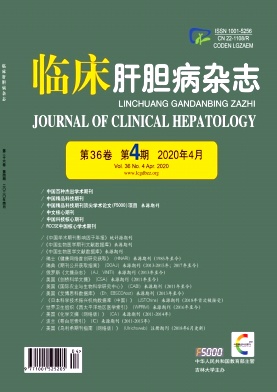|
[1] MA J,LUO DX,HUANG C,et al. AKR1B10 overexpression in breast cancer:Association with tumor size,lymph node metastasis and patient survival and its potential as a novel serum marker[J]. Int J Cancer,2012,131(6):e862-e871.
|
|
[2] SATO S,GENDA T,ICHIDA T,et al. Impact of aldo-keto reductase family 1 member B10 on the risk of hepatitis C virusrelated hepatocellular carcinoma[J]. J Gastroenterol Hepatol,2016,31(7):1315-1322.
|
|
[3] CHUNG YT,MATKOWSKYJ KA,LI H,et al. Overexpression and oncogenic function of aldo-keto reductase family 1B10(AKR1B10)in pancreatic carcinoma[J]. Mod Pathol,2012,25(5):758-766.
|
|
[4] FUKUMOTO S,YAMAUCHI N,MORIGUCHI H,et al. Overexpression of the aldo-keto reductase family protein AKR1B10is highly correlated with smokers’non-small cell lung carcinomas[J]. Clin Cancer Res,2005,11(5):1776-1785.
|
|
[5] CHEN WD,ZHANG Y. Regulation of aldo-keto reductases in human diseases[J]. Front Pharmacol,2012,3:35.
|
|
[6] GIANNINI EG,MARENCO S,BRUZZONE L,et al. Hepatocellular carcinoma in patients without cirrhosis in Italy[J]. Dig Liver Dis,2013,45(2):164-169.
|
|
[7] KULIK LM,CHOKECHANACHAISAKUL A. Evaluation and management of hepatocellular carcinoma[J]. Clin Liver Dis,2015,19(1):23-43.
|
|
[8] GRANJA S,PINHEIRO C,REIS RM,et al. Glucose addiction in cancer therapy:Advances and drawbacks[J]. Curr Drug Metab,2015,16(3):221-242.
|
|
[9] GANAPATHY-KANNIAPPAN S,GESCHWIND JF. Tumor glycolysis as a target for cancer therapy:Progress and prospects[J]. Mol Cancer,2013,12:152.
|
|
[10] PANIERI E,SANTORO MM. ROS homeostasis and metabolism:A dangerous liason in cancer cells[J]. Cell Death Dis,2016,7(6):e2253.
|
|
[11] LEE JH,PAULL TT. Activation and regulation of ATM kinase activity in response to DNA double-strand breaks[J]. Oncogene,2007,26(56):7741-7748.
|
|
[12] REDON CE,DICKEY JS,BONNER WM,et al.γ-H2AX as a biomarker of DNA damage induced by ionizing radiation in human peripheral blood lymphocytes and artificial skin[J]. Adv Space Res,2009,43(8):1171-1178.
|
|
[13] TONG L,CHUANG CC,WU S,et al. Reactive oxygen species in redox cancer therapy[J]. Cancer Lett,2015,367(1):18-25.
|
|
[14] WANG Z,LI S,CAO Y,et al. Oxidative stress and carbonyl lesions in ulcerative colitis and associated colorectal cancer[J]. Oxid Med Cell Longev,2016,2016:9875298.
|







 DownLoad:
DownLoad: